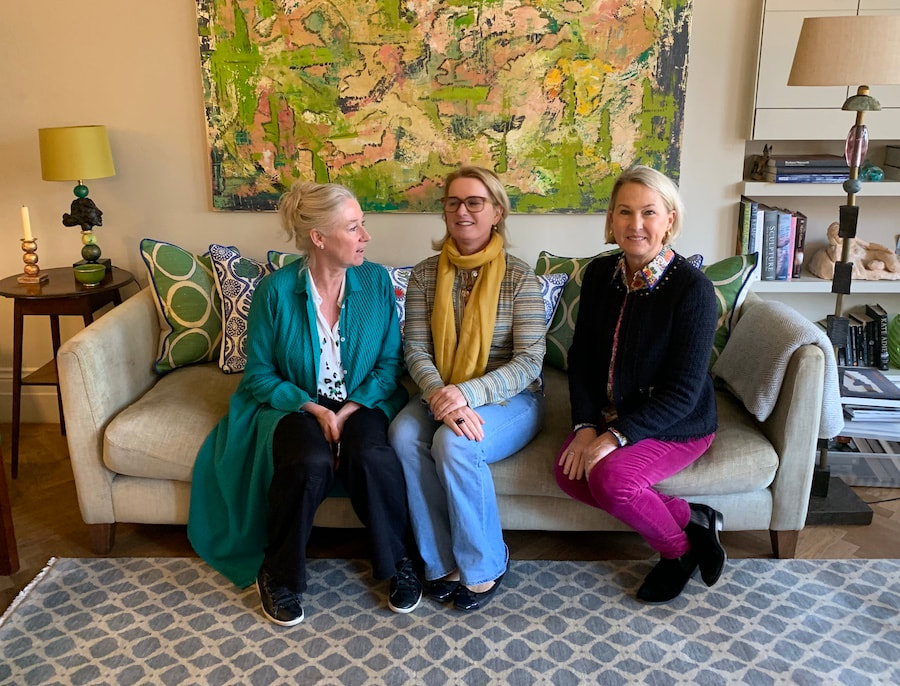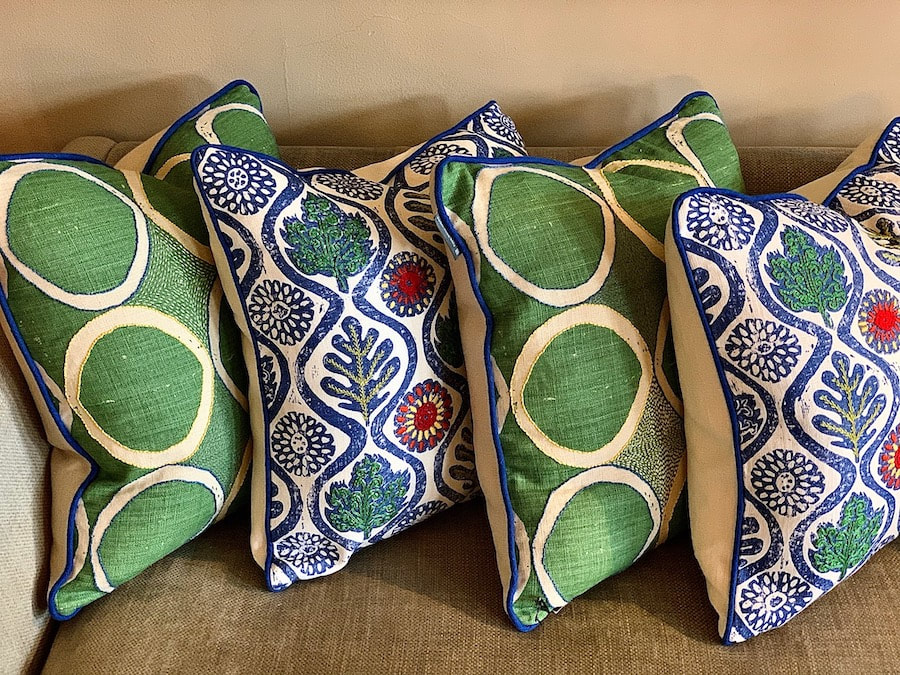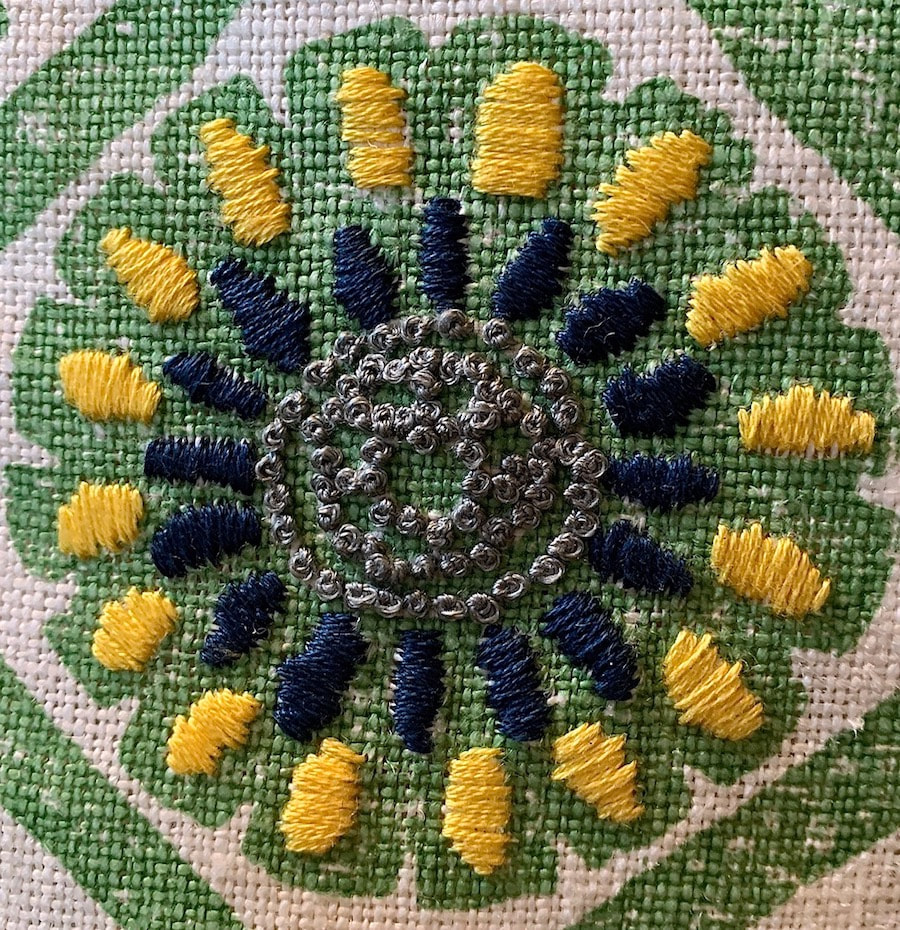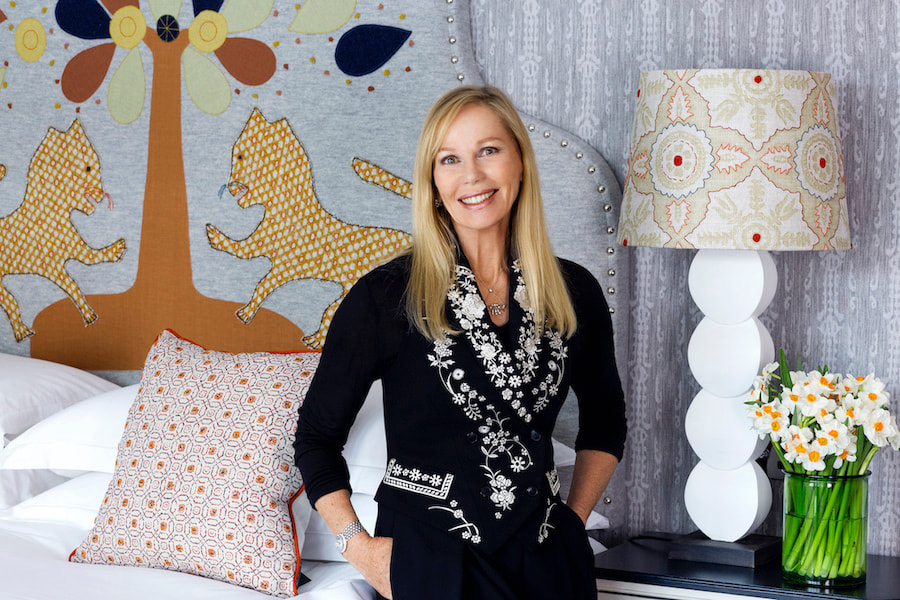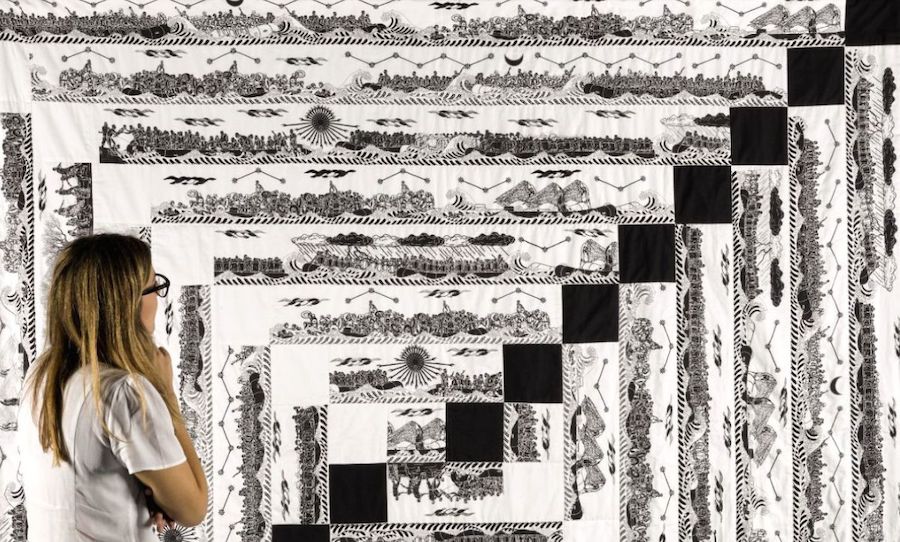Stitches of hope18/2/2020 What happens when a small-scale initiative becomes a route to rehabilitation? The UK prison population is the biggest in western Europe (projections forecast 85,800 by June 2022) with the highest population of prisoners serving life sentences. The growing prison population represents a failure of society. Once in prison one aim should be to rehabilitate. The government and its austerity decade has been disastrous. Isn’t is fascinating that it took the vision of one woman to do what our ministers cannot. To sew hope. Fine Cell Work is a charity and social enterprise founded by Lady Anne Tree in 1997 with the aim to enable prisoners to develop new skills, earn money and acquire the self-belief to stop offending. Why needlepoint? Well, her mother-in-law, Nancy Lancaster, owned the interior designers Colefax and Fowler giving her an opportunity to sell good-quality needlework for good prices through shops. Sewing is also therapeutic. Today, Fine Cell Work works in 30 prisons across the UK, works with 380 prisoners at any one time and just over 600 throughout the course of a year. The backbone is the close-knit team of 18 plus 85 redoubtable prison volunteers including members of the Embroiderers’ and Quilters Guild. I never tire of listening to its brilliant founding director, Katy Emck OBE talking about this enterprise’s aim of stitching a new path for prison communities across the country. At a recent event, she was joined by Fine Cell Work collaborator Liz Dowling, the co-founder of Blithfield fabric and designer Margit Wittig who welcomed an audience of interior designers and editors into her home. Fine Cell Work is a charity and social enterprise which enables prisoners to build fulfilling and crime-free lives. They do this by training them in high-quality, skilled, creative needlework undertaken in the long hours spent in their cells to foster hope, discipline and self-esteem. Katy Emck, Margit Wittig and Liz Dowlin Why needlepoint and embroidery we asked Katy, considering 96% of inmates are male. She answers, ‘having something worthwhile to do gives tremendous solace. Needlework takes forever and prisoners have time. Some can stitch for up to 30 hours a week in their cells and any one of the cushions can take about 150 hours work and a quilt can take between one and two years.’ They make thousands of pieces a year. The quality and range of the work is impressive. These become objects of intrinsic value and objects for prisoners to care for. What is heart warming is the cumulative emotional effect of such endeavour. Here’s a quote from one of the stitchers, as the prisoners who sign up are called… ‘Because of Fine Cell Work it has been over six years since I self-harmed. I have no mental health problems now and it has made me a better person.’ Katy furnishes us with more statistics. 50% of inmates are illiterate, a third are abused as children, many have mental health problems and have never been employed. Yet here they are ironically in a job, working but in prison, pursuing a skilled craft and given an opportunity to change. More fascinating insights follow. Katy reminds us that there has always been a tradition of craft in prisons. French prisons have a tradition of woodwork, Portugal carpet. In women’s prisons, we learn that there is a proportion of foreign nationals – Nigeria, Columbia, East Europe, all of whom have grown up around local craftwork and embroidery. They are keeping these skills alive. Whether male or female, this is an impressive bank of stitchers who Lady Anne Tree once described as ‘better than the Royal School of Needlework.’ Inspired by the mission of Fine Cell Work, Liz Downing the co-founder of Blithfield collaborated with Kit Kemp, Design Director and co-owner of Firmdale Hotels and the late Melissa Wyndham, to develop a range of cushion - some for needlepoint others where the printed design is stitched over to bring the pattern to life. Hand-embroidered Blithfield Circles and Oakleaves Circles has tiny lines of tidy stitching. This leaf green linen cushion is made in fabric from Blithfield’s Peggy Angus collection with Kit Kemp's design of hand-embroidered accents in blue, yellow and grey. Oakleaves detail Oakleaves fabric is from Blithfield’s Peggy Angus collection with Kit Kemp's design of hand-embroidered accents in leaf green and yellows. Another is the red linen Stratford cushion which pairs fabric from Blithfield's Custom Collection with hand-embroidered orange French Knots. Katy says that sometimes the stitchers skimp on the French Knots so there is a bonus for good ones. Kit kemp with Blithfield Stratford cushion and lampshade and her with Tree of Life headboard - linen applique on boiled wool, incorporating French knots, whipped back stitch, feather stitch, buttonhole, and coral stitch. ‘With the high quality of workmanship and skilled voluntary workers we have created covetable items. It would be wonderful at the end of the day if we could have an upholstery workshop and training scheme so everything could be done in the prisons. I have to thank Blithfield for their inspiring fabrics and everyone at Fine Cell Work for their commitment.’ Kit Kemp And the thanks don’t stop there. Each piece is tagged with a credit. My pin cushion had the surname of the stitcher and a note saying Feedback is important to our stitcher. To offer your appreciation, please write back to…This is a way communicate to a world beyond their cell walls. Katy describes the thank you letters for their finished work as the softest ‘secret weapons’. ‘Guys exist in a strange isolation – they become normal when talked about, the thank you letters make them feel connected.’ And not just connected by letters but imagine hearing your work has been commissioned by the Duchess of Cornwall and the HRH Prince Charles or exhibited in the V&A Museum. Katy says that ‘in 2015 we worked with the artist Cornelia Parker on ‘Magna Carta- an embroidery’ a 13-metre-long embroidered version of the Wikipedia entry on ‘Magna Carta’ as part of the celebration of 800 years of Magna Carta and displayed at the British Library. Stitched by over 200 people, much of the work was done by Fine Cell Work prisoners alongside lawyers and civil rights campaigners, barons and MPs. We produced The Wandsworth Quilt at HMP Wandsworth, which was hung at the V&A Museum as part of the major exhibition ‘Quilts 1700-2010’ and seen by thousands of visitors to the exhibition.’ Katy Emck Artists and prisoners continue to collaborate. Fine Cell Work is thrilled to announce HUMAN TOUCH a ground-breaking collaboration between eight leading contemporary artists and Fine Cell Work stitchers working in British prisons. The artists are Cornelia Parker, Ai Weiwei, Idris Khan, Carolina Mazzolari, Annie Morris, Bob and Roberta Smith, Wolfgang Tillmans and Francis Upritchard. The collaboration has resulted in eight incredible works of art which will be exhibited at Sotheby’s from 26 February until 3 March 2020 and sold by Fine Cell Work. HUMAN TOUCH finecellwork.co.uk BLITHFIELD, KIT KEMP & MELISSA WYNDHAM finecellwork.co.uk MARGIT WITTIG margitwittig.com
0 Comments
Your comment will be posted after it is approved.
Leave a Reply.Categories
All
Archives
April 2020
|


